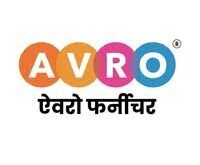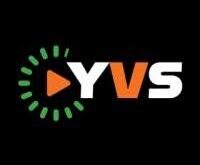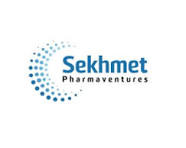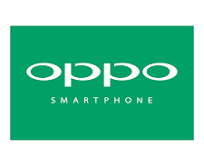Hyper Automation has topped Gartner’s list of strategic technology trends for several years now, and for good reason. As the adoption of automation and AI skyrockets, the tools and technologies are evolving, ushering in a new era that promises to optimize business processes and improve user experiences like never before. The push towards hyper-automation has become a game-changer.
This approach, characterized by leveraging advanced technologies like AI, machine learning, and data analytics, enables companies to streamline processes, enhance customer experiences, and achieve higher ROI. Hence, staying abreast with the best practices for the effective implementation of hyper automation in marketing can be a true advantage for B2B companies.
Best Practices for Building a Hyper-Automated Marketing Ecosystem
Hyper Automation, defined by Gartner as “the combination of multiple machine learning, packaged software, and automation tools to deliver work,” represents the pinnacle of technological evolution.
Hyper Automation blends various advanced technologies like AI and machine learning with automation tools to automate and enhance processes beyond what was previously possible. This isn’t just about automating individual tasks; it’s about creating a system where multiple processes across your organization can be automated and optimized. This involves several stages: discovering, analyzing, designing, automating, measuring, monitoring, and reassessing. It’s a comprehensive approach that ensures continuous improvement. Some key best practices that can help build a robust hyper-automated marketing ecosystem include:
- Leverage AI and Machine Learning – AI and machine learning are at the heart of Hyper Automation. They enable predictive analytics, personalized marketing, and intelligent decision-making. According to a study by McKinsey, companies that use AI in their marketing strategies see a 20% increase in customer satisfaction and a 10-15% increase in sales conversion rates .
- Integrate CRM and Marketing Automation Platforms – Seamless integration of Customer Relationship Management (CRM) systems with marketing automation platforms is crucial. This integration ensures that customer data is unified, providing a 360-degree view of customer interactions. HubSpot reports that businesses with aligned sales and marketing teams achieve 208% higher marketing revenue compared to those without such alignment .
- Adopt Data-Driven Marketing – Data is the fuel that powers Hyper Automation. By leveraging big data and advanced analytics, B2B companies can gain deep insights into customer behavior, preferences, and trends. A recent report by Salesforce indicates that high-performing marketing teams are 2.5 times more likely to base decisions on data-driven insights .
- Implement Chatbots and Virtual Assistants – Chatbots and virtual assistants can handle routine queries, schedule appointments, and guide potential customers through the sales funnel. Gartner predicts that by 2025, 80% of B2B sales interactions will occur on digital channels, making the use of chatbots an essential component of hyper-automated ecosystems .
- Utilize Marketing Analytics and Dashboards – Effective use of marketing analytics and dashboards allows for real-time tracking of campaign performance, enabling swift adjustments and improvements. A survey by Ascend2 and Anteriad reveals that 69% of B2B marketers say that improving data quality is a top priority for their organization
Benefits of Hyper Automation
Hyper-automation extends beyond mere automation by integrating various technologies to create a seamless, end-to-end marketing system. It encompasses everything from lead generation and nurturing to customer relationship management and analytics, ensuring that every aspect of the marketing process is optimized. Here are some key benefits of Hyper Automation in B2B marketing:
- Enhanced Efficiency and Productivity Hyper Automation streamlines repetitive and manual tasks, allowing marketing teams to focus on strategic initiatives. This leads to faster and more efficient operations, improving overall productivity.
- Improved Customer Experience By automating customer interactions and leveraging AI-driven insights, businesses can offer personalized and timely responses, enhancing customer satisfaction and loyalty.
Cost Reduction Automation of routine processes reduces labor costs and minimizes errors. For example, robotic process automation (RPA) can handle data entry and other time-consuming tasks, cutting operational expenses significantly. - Data-Driven Decision Making Hyper Automation enables real-time data analysis and reporting, providing marketers with valuable insights to make informed decisions. This helps in optimizing marketing strategies and improving campaign performance.
- Scalability As businesses grow, hyper automation allows them to scale their marketing efforts without a proportional increase in resources. Automated systems can handle increased workloads seamlessly, ensuring consistent performance.
- Enhanced Collaboration Integrated automation platforms facilitate better collaboration between marketing and sales teams by providing a unified view of customer data and interactions. This alignment leads to more effective lead management and higher conversion rates.
- Higher Accuracy and Consistency Automated processes ensure high accuracy and consistency in marketing activities, reducing the risk of errors and enhancing the overall quality of campaigns.
In conclusion, building a hyper-automated marketing ecosystem requires a strategic approach and a commitment to integrating advanced technologies. By leveraging AI and machine learning, integrating CRM and marketing automation platforms, adopting data-driven marketing, implementing chatbots, and utilizing marketing analytics, B2B companies can significantly enhance their marketing effectiveness and drive sustainable growth. As the digital landscape continues to evolve, staying ahead with Hyper Automation will be key to maintaining a competitive edge.
 Newspatrolling.com News cum Content Syndication Portal Online
Newspatrolling.com News cum Content Syndication Portal Online







